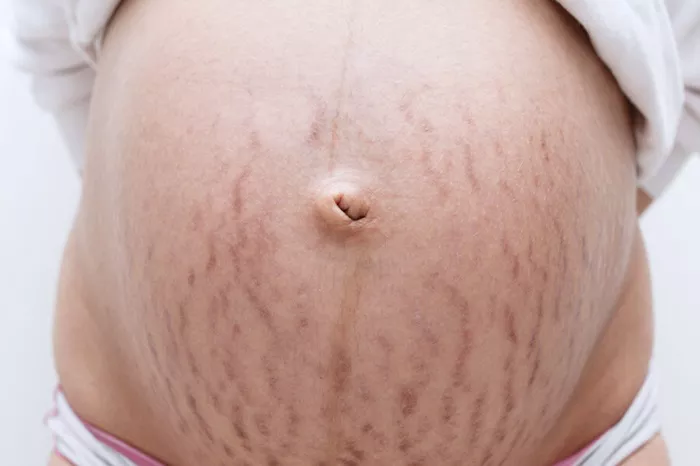Stretch marks, or striae, are a common skin concern. They often appear after rapid changes in body size or weight, such as during pregnancy or puberty. While many treatments claim to improve their appearance, people frequently wonder: can plastic surgery completely remove stretch marks?
This article delves into the nature of stretch marks, surgical solutions, and realistic expectations.
What Are Stretch Marks?
Stretch marks occur when the skin stretches or shrinks rapidly. This abrupt change causes the middle layer of the skin, called the dermis, to tear. As the skin heals, scars form, creating visible marks on the surface.
Common causes include:
- Pregnancy
- Rapid weight gain or loss
- Puberty growth spurts
- Medical conditions like Cushing’s syndrome
- Long-term use of corticosteroids
Stretch marks often appear on the abdomen, thighs, hips, breasts, or arms. They start red, purple, or pink but fade to silvery white over time.
Why Are Stretch Marks Difficult to Remove?
Stretch marks are scars. Unlike superficial skin blemishes, scars involve damage to deeper skin layers. Treatment must address the skin’s structure and stimulate healing.
Many over-the-counter creams and lotions promise results, but they rarely penetrate deeply enough. While these products may improve skin texture, they don’t eliminate stretch marks.
This brings us to the question: can surgical procedures succeed where other treatments fail?
Plastic Surgery Options for Stretch Marks
Plastic surgery offers more invasive options to target stretch marks. Here are the most common procedures:
1. Abdominoplasty (Tummy Tuck)
A tummy tuck removes excess skin and fat from the abdominal area. During this surgery, the skin is tightened, and the surgeon may remove the lower abdominal skin where stretch marks often occur.
Pros:
- Removes stretch marks in the excised skin.
- Tightens abdominal muscles, enhancing body contour.
Cons:
- Limited to the abdomen.
- Stretch marks outside the treated area remain.
- Long recovery time and visible scars.
This procedure is ideal for people with significant abdominal skin laxity, often following pregnancy or weight loss.
2. Breast Lift or Reduction
Stretch marks on the breasts can be addressed with breast surgery. A breast lift removes excess skin and reshapes the breast, eliminating some stretch-marked skin.
Pros:
- Improves breast shape and appearance.
- Can remove some stretch marks in the process.
Cons:
- Not all stretch marks are removed.
- Involves visible scarring.
For individuals with stretch marks from breastfeeding or weight changes, this procedure offers dual benefits.
3. Body Lift Procedures
Body lifts, including lower body lifts and arm lifts, target excess skin in various areas. These surgeries can remove stretch-marked skin while tightening the surrounding area.
Pros:
- Comprehensive body contouring.
- Effective for massive weight loss patients.
Cons:
- Extensive recovery period.
- Significant scarring in treated areas.
Do These Procedures Guarantee Stretch Mark Removal?
No surgical procedure can promise complete stretch mark removal. Here’s why:
- Stretch marks often extend beyond the excised skin.
- Even after surgery, remaining skin may still show marks.
- Scarring from surgery can replace some stretch marks.
Non-Surgical Alternatives to Improve Stretch Marks
Before considering surgery, less invasive options may help improve stretch marks’ appearance:
1. Laser Therapy
Laser treatments, like fractional CO2 lasers, stimulate collagen production. They don’t remove stretch marks but make them less noticeable.
Pros:
- Minimal downtime.
- Can treat multiple areas.
Cons:
- Requires multiple sessions.
- Results vary depending on skin type and stretch mark severity.
2. Microneedling
Microneedling uses tiny needles to create micro-injuries, boosting collagen production.
Pros:
- Affordable compared to surgery.
- Effective for newer stretch marks.
Cons:
- Doesn’t work as well on older marks.
- Results take time.
3. Chemical Peels
Chemical peels exfoliate the top skin layers, improving texture and discoloration.
Pros:
- Improves skin tone.
- Suitable for mild marks.
Cons:
- Doesn’t affect deep stretch marks.
- Not effective as a standalone solution.
Weighing the Risks and Benefits of Plastic Surgery
Plastic surgery can be transformative, but it’s not a cure-all. Here are the key considerations:
Benefits:
- Immediate improvement in body contour.
- Removes stretch-marked skin during excision.
Risks:
- Surgical scars may replace stretch marks.
- Long recovery periods.
- High costs, often not covered by insurance.
A thorough consultation with a board-certified plastic surgeon is essential. They will assess your goals, stretch mark location, and skin condition to recommend the best approach.
Who Is a Good Candidate for Surgery?
Surgery is not for everyone. Ideal candidates:
- Are in good physical health.
- Have realistic expectations about results.
- Are willing to accept surgical scars as a trade-off.
People seeking complete stretch mark removal may be disappointed. However, surgery can significantly improve body aesthetics.
Conclusion
Plastic surgery can remove stretch marks in excised areas, but it is not a universal solution. Procedures like tummy tucks and body lifts are effective for specific regions, but they come with scars and other risks.
For those seeking less invasive options, treatments like laser therapy and microneedling offer moderate improvement. Choosing the right approach depends on your goals, budget, and tolerance for recovery time.
Consulting a professional is the best way to determine if plastic surgery aligns with your needs. While the dream of flawless skin may not be entirely achievable, modern techniques provide promising ways to enhance your appearance and confidence.
Related topic:
Does Kim Kardashian Have Plastic Surgery?
Is Plastic Surgery Tax Deductible?
Can Plastic Surgeons Remove Scars?

